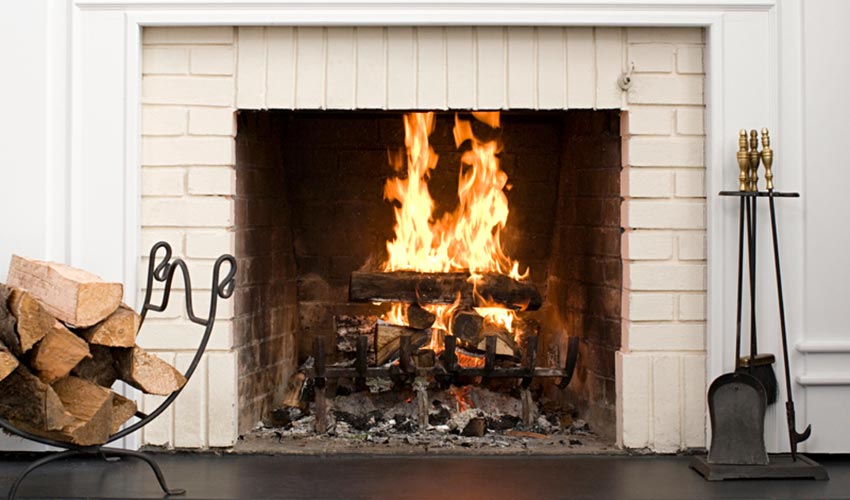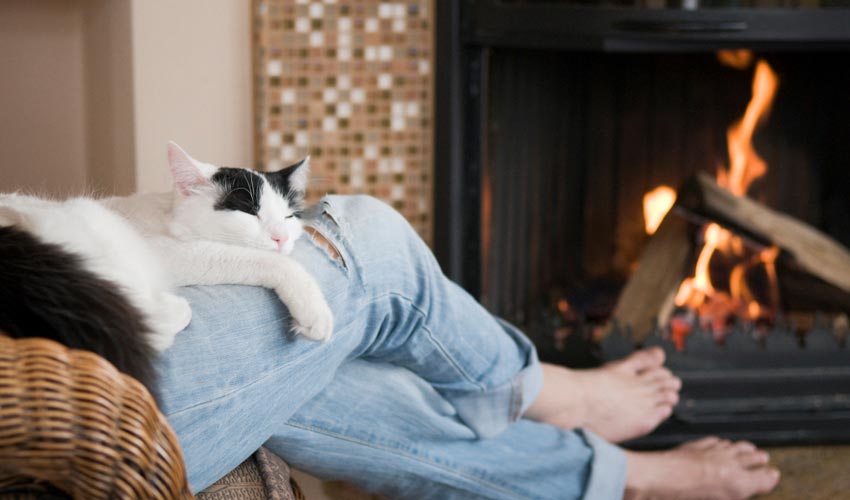Two-thirds of all residential fires are caused by improperly maintained fireplaces, chimneys, and wood stoves, according to the National Fire Protection Association. Which means, most of these types of fires are preventable. So, before you cozy up to a fire this winter, make sure you follow a few simple safety tips.
Get your fireplace and chimney inspected and cleaned.
Some fires are the result of a build-up in the chimney flue called creosote, which is a biproduct of burning wood. When the temperature inside the flue gets high enough, the creosote can ignite, causing a chimney fire. Because flues are not designed for the high temperature of a direct fire, the flue material can crack or separate and allow the structural material of a house to catch fire.
Hiring a chimney sweep once a year to clean and maintain your fireplace and chimney can prevent a lot of issues. Visit the Chimney Safety Institute of America (www.csia.org) website to find a certified chimney sweep in your area.Properly dispose of fireplace ashes.
Place them in a metal bucket, allow them to cool for 12 -24 hours, wet them down, and move them outside until there are no more hot spots. Get your chimney inspected and cleaned before the holidays.Maintain your wood stove, gas log system and oil-fired heating equipment too.
Each of these systems should be cleaned, inspected, and maintained at least once a year to prevent problems.Install a spark arrestor and glass doors.
A spark arrestor is a screen that covers the top of your chimney. It can prevent hot embers from flying out of the chimney, landing on, and igniting roofing material, leaves, or other debris on the roof. Installing glass fireplace doors will act as a second layer of defense against airborne embers. If you’re leaving the home or retiring for the evening, always close the glass doors but leave the flue open.

Use a protective screen with a wood burning fireplace.
This screen will catch any stray embers before they can fly or pop out of your fireplace.Install carbon monoxide detectors on every floor of your home.
Carbon monoxide can cause sickness and even death, if undetected. Because it cannot be seen or smelled, a detector is a necessity.Use seasoned hardwood.
Softwood or unseasoned hardwood can create an excessive amount of creosote to build up in your chimney flue.

Keep your fire to a reasonable level.
While it may seem nice to have a roaring fire in the fireplace, creating excessive heat in the chimney can cause the flue to crack.Stay by your fire, until it’s out.
Never go to sleep or leave your home while a wood burning fire is going. By being close by, you can make sure your fire stays under control – and you can enjoy its warmth and ambiance!
Tips & Resources
We help you stay ahead and informed with these helpful tips and tricks

